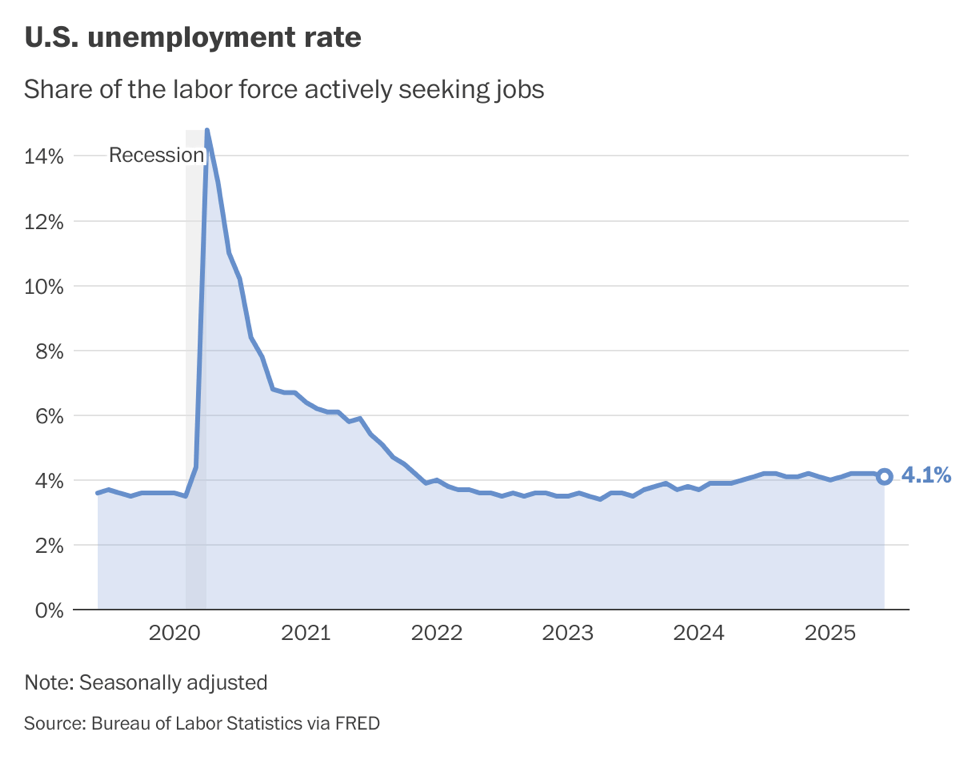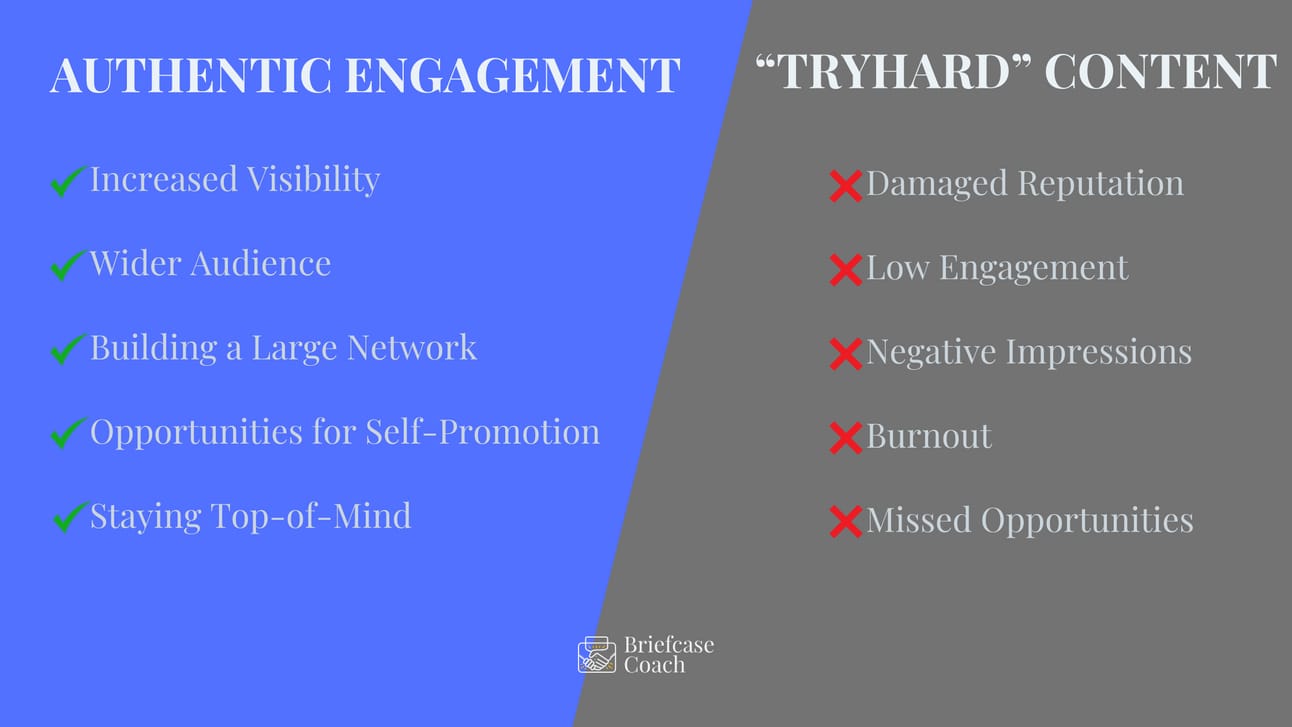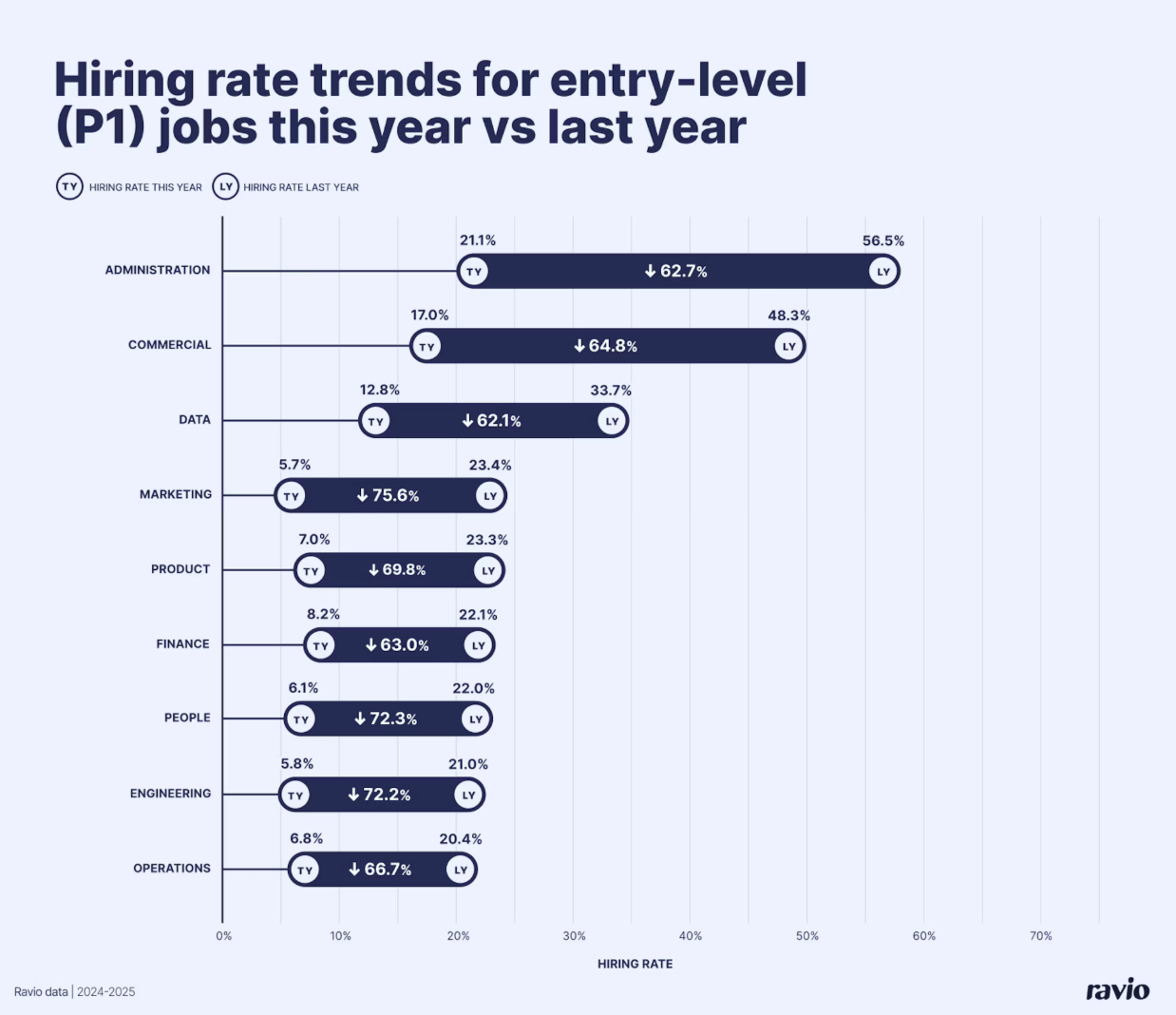- Briefcase Coach's Career Briefs: Job Search Newsletter
- Posts
- Career Briefs: Changes in the Workplace, Tryhards, Middle Manager Casualties and Leadership Transitions
Career Briefs: Changes in the Workplace, Tryhards, Middle Manager Casualties and Leadership Transitions
In this edition: More candidates are being interviewed by AI, how on-demand pay is becoming a top employee benefit, what June’s jobs report reveals about resilience, and why CEOs are stepping down earlier with purpose—plus much more.

Dear Reader:
This month marks ten years since I launched Briefcase Coach—a milestone that has me reflecting on just how much has changed since those early solo days. What began as a one-woman endeavor has grown into a powerhouse team of industry experts who bring deep experience, strategic insight, and heart to everything we do.
While many of you may know us for our one-on-one work with private clients, our impact has expanded well beyond that. Today, a growing roster of corporate partners—more than a dozen and counting—trust us to support their outplacement needs and elevate their internal talent. Whether we’re helping a high-potential leader strengthen their story or guiding a transitioning executive with dignity and care, our team is honored to be part of those pivotal moments.
To those of you who’ve supported us over the years—by reading, referring, or just cheering us on—thank you. Your belief in our work has shaped what Briefcase Coach is today, and we’re just getting started.

In This Issue
Robots Are Taking Over Job Interviews
AI-driven interviews are reshaping hiring by automating early candidate interactions through conversational AI agents that conduct real-time interviews. While this technology allows recruiters to efficiently and cost-effectively screen large applicant pools, it is often at the cost of a personal, human touch. Many candidates find these AI interviews impersonal and sometimes unsettling, as the technology struggles to answer their questions fully or gauge cultural fit and soft skills.
While AI enhances efficiency and tailors questions to candidates, human judgment remains essential for evaluating subtle qualities, reducing bias, and making well-rounded hiring decisions. The key to success lies in striking the right balance between automation and authentic human connection. As recruitment continues to evolve, organizations that blend AI’s speed with thoughtful human insight will build stronger talent pipelines and gain a lasting advantage in attracting top talent.
Read more here: Welcome to Your Job Interview. Your Interviewer Is A.I.
Have you ever been interviewed by AI (e.g., a one-way video or chatbot-style interview)? |
NEW: The Triangle Talent Brief
I live and work in the Research Triangle and am seeing first hand that it’s one of the toughest job markets in the U.S. Once seen as one of the top metropolitan areas in the U.S. to live and work in, this region has thrived on federal grants that fuel tech and research. But recent government cuts have hit here the hardest, while rapid population growth means more competition for fewer jobs.
That’s why I’m thrilled to announce the upcoming launch of a brand-new newsletter debuting in Q3: The Triangle Talent Brief—a curated resource dedicated to the people, trends, and opportunities shaping the talent landscape in the Triangle.
This newsletter will deliver in-depth insights on local hiring and layoff trends, exclusive interviews with top employers and thought leaders, and data-backed analysis on which industries are growing, slowing, or stalling.
Sign up now for early access and be the first to receive our upcoming issues. I can’t wait to share what’s next with you.
Redefining Retirement in the Face of Career Disruption
Late-career job losses are blurring the traditional path to retirement. Executives and senior professionals are increasingly facing layoffs, buyouts, or pressure to exit sooner than planned which leads to extended job searches, lower re-employment pay, or an unexpected shift into part-time work. Workers ages 55–64 average 26 weeks to find new roles, often hindered by age bias and salary expectations.
Yet many are redefining this transition with resilience and creativity. Some executives shifted to part-time consulting and nonprofit leadership, preserving both income and purpose while others stepped away from the job market entirely, embracing lifestyle resets centered on personal fulfillment. The key lesson: organizations and leaders must rethink retirement transitions by offering flexible exit paths, addressing age bias, and planning early for financial security and meaningful post-career engagement. Retirement today is less an end and more of a strategic pivot.
June Jobs Report Reveals Resilience
In June, the U.S. labor market demonstrated resilience by adding 147,000 jobs and lowering unemployment to 4.1%, near historic lows, despite persistent economic uncertainties. Job growth was concentrated in public sector roles, especially within state and local government, and healthcare, driven by demographic demands and public investment. Meanwhile, manufacturing and tariff-sensitive sectors faced declines, reflecting trade tensions and policy shifts.

Wage growth outpaced inflation, supporting consumer spending, but slower hiring, a shrinking labor force, and rising long-term unemployment signal underlying weaknesses. These factors highlight the urgent need for agile workforce strategies, proactive risk management, and scenario planning to address evolving labor availability and cost pressures. Navigating these complexities with flexibility and foresight will be essential to sustaining organizational growth and competitiveness amid uncertain economic and policy landscapes.
The LinkedIn Tryhard Trap (And How to Avoid It)
I’ve watched countless professionals fall into the LinkedIn “tryhard” trap by trying to gain attention and establish credibility with constant posts, recycled content, or self-promotion that feels forced. Instead of building influence, they burn out, lose credibility, and often get ignored. I’ve found that success on LinkedIn comes from doing the opposite: focusing on genuine connection, sharing real insights, and being intentional about personal branding. It’s about knowing your audience, posting with purpose, and engaging in ways that actually add value. You don’t need to post every day or pretend to be an expert on everything. Consistency matters more than volume, and authenticity beats algorithms every time.

It also matters how you engage with other. Quality interactions build trust and open doors. With a clear personal brand, a defined audience, and a purposeful posting strategy, LinkedIn can become a powerful tool for growth and influence. You just have to stop trying so hard and start showing up the right way.
Read my full article here: LinkedIn Strategies for Thought Leadership: Avoid the “Tryhard” Trap.
On-Demand Pay: The Rising Benefit Outshining 401(k)
Unsurprisingly, financial stress affects nearly three-quarters of workers, as rising housing costs, inflation, and stagnant wages force many to live paycheck to paycheck. In response, a new system enabling employees to access earned wages anytime rather than waiting for traditional pay cycles is rapidly gaining popularity, even surpassing retirement plans as a valued benefit. This “on-demand pay” system gives workers greater financial control without interest or loans, easing anxiety and improving focus on the job.
Employers like the Vonachen Group have seen turnover drop by 25% after introducing weekly pay access through platforms such as DailyPay. For companies with large hourly workforces, on-demand pay offers a practical, low-cost way to support employee financial wellness and retention while integrating seamlessly with existing payroll systems. While it doesn’t address wage stagnation, it significantly reduces employee stress and empowers workers to better manage daily expenses.
Read more here: An employee benefit linked to financial stress is becoming more popular than 401(k).
When Stepping Down Becomes a Strategic Move
An increasing number of CEOs are choosing to step down earlier than expected, not out of necessity, but from a deeper understanding of timing, purpose, and legacy. Former executives like Whole Foods cofounder John Mackey and Girls Who Code founder Reshma Saujani recognized that when their passion waned or the company’s needs evolved, it was time to move on. Others, including Rick Hammell and George Barrett, stepped aside to make room for new leadership and to pursue fresh ventures or personal goals.

The transition is rarely easy. It can challenge identity, sever ties to power or prestige, and disrupt daily routines. Still, many find clarity through self-imposed deadlines, therapy, or the lure of building something new. As CEO turnover rises, these stories reflect a broader shift toward intentional, well-timed exits and reimagined post-leadership lives.
Read more here: How CEOs know when it's time to quit.
Middle Managers Are the First Casualty of the AI Boom
Middle management roles are shrinking as companies double down on cost-cutting and AI investment. Post-pandemic workforce recalibration and rising interest rates sparked an initial reduction, but AI’s growing role in automating project oversight, performance reviews, and decision-making is accelerating the trend.
A Gusto survey of 8,500 small businesses found manager-to-employee ratios widening from 1:3 in 2019 to 1:6 in 2025, with manager layoffs outpacing other roles. Large enterprises like Amazon, Google, Meta, and Microsoft are openly eliminating layers of midlevel oversight while channeling major investments into AI. This change signals a fundamental shift in organizational design to focus on flattened hierarchies, leaner management structures, and AI-enabled oversight. But in turn, it also raises critical questions about leadership pipelines, accountability, and how strategic decisions are delegated in a leaner corporate landscape.
Read more here: Middle manager roles fall as AI investment rises.
Positioning for Your Next C-Suite Role Without Raising Alarms
For executives, the most effective executive job searches happen quietly, by focusing on visibility, influence, and reputation, not open job hunting. Successful leaders cultivate strong industry presence and genuine relationships, demonstrating strategic thinking well ahead of any openings.
As Loribeth Pierson, Resume Writer and Job Search Coach at Linked Journal LLC, explains, “The most effective C-suite searches come when executives first establish themselves as industry leaders—not just candidates. By sharing insights and engaging in strategic dialogue, they build a reputation as results-driven leaders.”
Confidential searches aren’t about hiding but about positioning yourself as the obvious choice once the right opportunity arises. This means being present where it matters, leading with impact, and letting your track record and reputation do the talking, without the need for big announcements.
Read more here: The C-Suite Secret: How Top Executives Land Dream Jobs While Their Boss Thinks They're Loyal.
The Real Risk of Automating Away Entry-Level Jobs
Entry-level hiring in tech has plummeted, down 73% in the past year according to data from Ravio , as AI tools take over tasks once assigned to junior roles. But cutting early career jobs isn’t just a cost-saving move. It risks eroding talent pipelines, weakening leadership succession, and stifling innovation. Junior hires have long been a source of fresh ideas, future leaders, and cultural continuity.

While AI handles routine tasks, companies still need people who can think critically, solve problems, and bring creativity to the table. The opportunity isn’t to eliminate entry-level roles, but to redesign them for the AI era by focusing on emerging skills, real project exposure, and intentional development. Investing in structured learning, mentoring, and a skills-based approach to hiring ensures junior talent adds immediate value while growing into future leaders. Companies that adapt now will secure a competitive edge, while those who sideline junior talent risk paying the price in both culture and capability later on.
Read more here: Early career hiring is down 73% – here's why it's time to redesign entry-level roles for the AI era.
How Can I Help? |
|---|
Do you know someone who is job searching? 35%. That’s the number of clients referred to us by previous clients. We view referrals as the highest compliment that we can receive. As a token of our appreciation, we offer referral gifts ranging from Ember mugs to Jeni’s ice cream boxes. |
Is your company people-focused? Consider sharing Briefcase Coach with your HR leadership. We are a great “white-glove” boutique option for executive outplacement. |
Need to make updates to your professional documents or prepare for a high-stakes interview? Briefcase Coach has an experienced team ready to help high performers wanting to work one-on-one with an executive career strategist. |
Reply